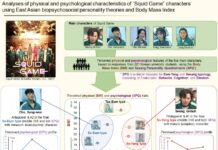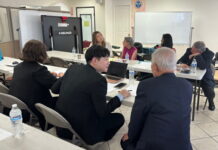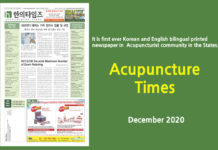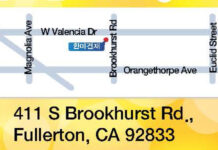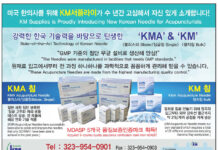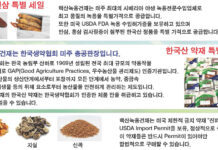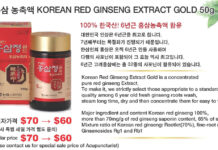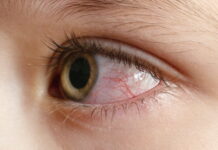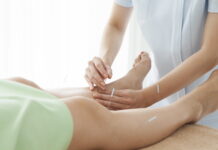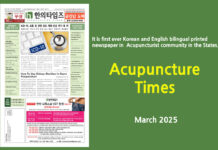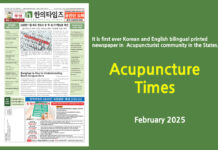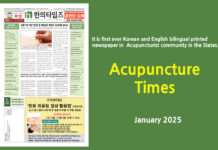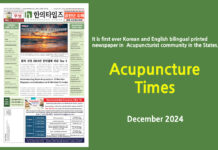Understanding Its Use for Deficient Cold Types and Body Pain
By Daniel Cho, L.Ac. (email: c0454445@gmail.com)
Gui Zhi Tang can be considered for:
- Deficient Cold Types with
- Aversion to cold, coldness of hands, feet or other body parts, and
- Body pain caused by cold stimulation.
It can be considered primarily when patients say it happens after shivering or sleeping in a cold place, when they catch a cold, or before a period. They may have flu-like symptoms, such as chills and aching pain in the whole body. Symptoms/signs of Shao Yao may or may not appear. We can consider Shao Yao when there are signs of excessive tension in the flexor muscles. We can also consider it when excessive tension and tenderness of the biceps, abdominal muscles, and iliopsoas muscles are diagnosed. But we can still use Shao Yao without such signs.
The picture above is called the BMI silhouette. The body shape is one of the important components of the prescription criteria. At this point, the BMI silhouette can be a helpful guide in measuring the patient’s weight status. Rather than presenting the BMI ratio in numbers, if you present it as a picture, you can quickly see the level of obesity/emaciation. Prescription criteria include ‘implicit knowledge of CAPE signs’ and ‘explicit knowledge of physical symptoms.’ The obesity/emaciation of body shape is included as the implicit knowledge of CAPE signs. Each formula has an approximate range of body shape (obesity/emaciation). In this book, each formula is presented with its own BMI silhouette.
Prescription Criteria
*Deficient Cold Type: Emaciated, weak physical strength, white/yellow facial color, aversion to cold.
Yin-natured
Aversion to cold + coldness of the limbs, body pain caused by cold stimulation, sometimes Upper Rush, Shao Yao’s muscle signs
Prescription criteria of using Gui Zhi Tang for chronic disorders
|
CAPE signs |
||
|
Appearance |
*Body shape: emaciated~moderate. – Mostly underweight~normal (BMI 19~22), in rare cases, mildly obese (BMI below 19 or above 22~up to 24). *Yin-natured body type: Lower-body predominance (Upper body≦Lower body), Shoulder and chest≦Pelvis, Pelvic Type, Long and slender Type. *Stamina: weak>average. |
*Deficient Cold Type: Emaciated, weak physical strength, white/yellow facial color, Yin-natured personality and body type, and aversion to cold. |
|
Color |
*Pale complexion, white/yellow facial color or sometimes red cheeks (due to Upper Rush). |
|
|
Personality |
*Yin personality: Gentle and slow behaviors, introverted, static, mild-mannered, amicable. Voice is small, slow, and soft. |
|
|
Emotion |
*Stable or emotionally sensitive. |
|
|
Cautionary Symptoms/Signs |
*Obesity, strong stamina, red/brown/black facial color, Yang-natured personality and body type. |
|
|
Physical Symptoms |
|
|
Main Symptoms |
*Aversion to cold + coldness of the limbs: Patients easily feel cold more often than others. (Cold Scale: Around 5). Parts of the body, such as hands and feet, are cold and icy. |
|
*Body pain caused by cold stimulation: Joint and muscle pain (body aches) caused and worsened by cold stimulation, and lost and alleviated by thermal stimulation. – After shivering or sleeping in a cold place, my whole body (joint and muscles) aches and hurts. – Before menstruation, my body is sore and painful, as if I’m coming down with a common cold. |
|
|
Possible Symptoms |
*Upper Rush: When the patient is tense, excited, or feeling hot, heat may rise to the face and upper body. *Shao Yao and Da Zao’s muscle signs: Shao Yao’s excessive tension and tenderness of the biceps and iliopsoas – small lumps and tenderness of the abdominal muscles are sometimes diagnosed. Da Zao’s excessive tension and tenderness of the triceps and rhomboids are often diagnosed. |
|
*Spontaneous sweating: There are cases of spontaneous sweating, night sweating, and sweating during meals (due to Upper Rush). Sometimes, there are cases of cold sweating due to fatigue or the common cold. |
|
|
Tendencies |
*Common cold type: Body aches. When patients catch a cold, their body is chilly, sore, and painful. They may also have a mild fever and sweat. |
|
*Pulse: Floating and weak |
|
|
Cautionary Symptoms/Signs |
aversion to heat, edema |



